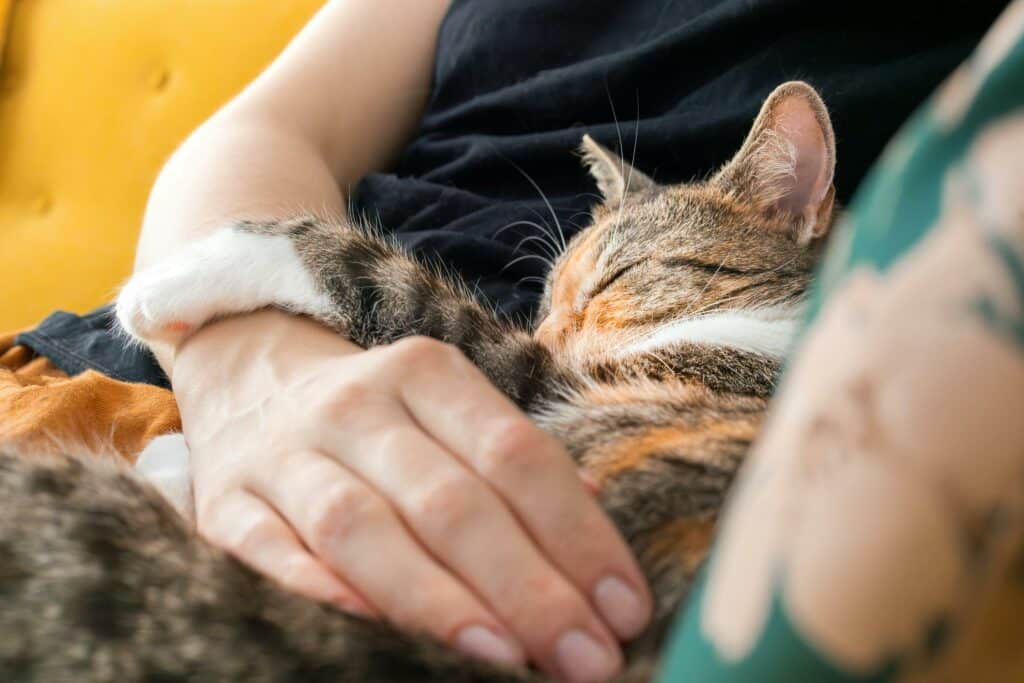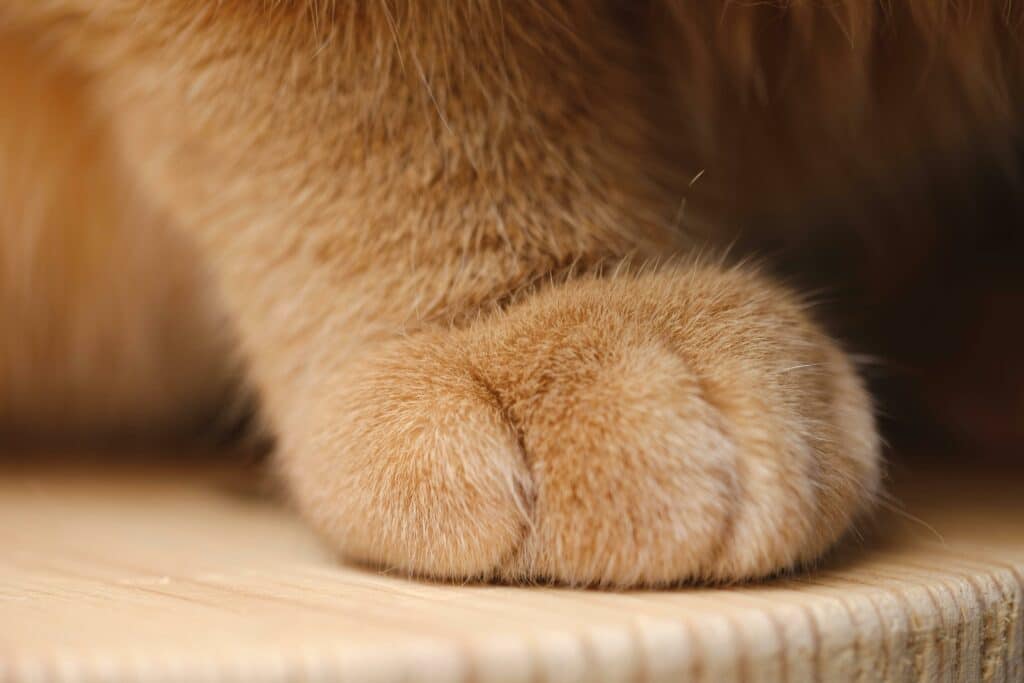
If you’ve ever had a cat curl up in your lap and begin rhythmically pressing their paws into you, you’ve likely wondered, Why do cats knead? This endearing behavior, often referred to as “making biscuits,” is both curious and deeply rooted in a cat’s nature. Let’s explore the fascinating reasons behind why cats knead.
What Is Kneading?
Kneading is a repetitive, rhythmic motion where cats push their paws into a soft surface, alternating between their left and right front paws. This action often occurs on cozy blankets, plush furniture, or even their favorite human. Though it seems peculiar, kneading serves various purposes in a cat’s life.
The Origin of Cats Kneading
Instincts from Kittenhood
One of the earliest explanations for why cats knead lies in their kittenhood. Kittens instinctively knead their mother’s belly to stimulate milk flow while nursing. This behavior provides a sense of comfort and safety, which some cats carry into adulthood. Even when they no longer depend on their mother for milk, the soothing sensation remains associated with security and well-being.
Why Adult Cats Knead
Marking Territory
Cats are territorial creatures. When a cat kneads, they activate the scent glands located in their paw pads, subtly leaving their scent on the object or person they are kneading. This scent marking is a way for cats to claim their territory and communicate ownership to other animals. It explains why your cat might favor kneading a particular spot or person they consider “theirs.”
Stretching and Relaxation
Kneading also serves a practical purpose. Much like a yoga session helps humans loosen up, kneading helps cats stretch their muscles and tendons. The rhythmic motion promotes flexibility, allowing them to keep limber, especially after a nap or long rest. This muscle movement can be a pleasant way for cats to relax and feel at ease.
Comfort and Happiness
When cats knead, it’s often a sign that they’re content and happy. Many cats will knead while purring, further indicating their relaxed state. Your lap, a soft blanket, or even a pillow can remind them of the warm, comforting times they experienced as kittens. For some cats, kneading is akin to humans cuddling with a favorite blanket.
Behavioral and Evolutionary Theories
Preparing a Resting Spot
One common theory suggests that cats knead to prepare a soft, comfortable resting area. In the wild, their ancestors would knead to flatten grass or leaves and create a cozy bed for sleeping or giving birth. This behavior, carried over from wild cats, may explain why domestic cats still instinctively knead before lying down.
Maternal Instincts
In female cats, kneading can also be linked to reproductive behavior. A cat ready to mate may knead as part of a natural display, signaling her readiness to nearby male cats. Although this specific reason is more relevant to unspayed cats, it highlights another aspect of the evolutionary roots of kneading.

Why Some Cats Knead More
Not all cats knead with the same intensity or frequency. Several factors can influence a cat’s kneading habits:
- Breed Characteristics: Some cat breeds, such as Ragdolls and Maine Coons, are known for being more affectionate and may knead more frequently.
- Personality Differences: Just like humans, cats have unique personalities. Some may be more inclined to knead due to a higher need for comfort and reassurance.
- Emotional Triggers: Cats may knead more often if they feel especially safe, loved, or content in a particular environment.
Can Cats Kneading Be Problematic?
Unintended Consequences
While kneading is usually a harmless and adorable behavior, it can sometimes lead to minor issues. Cats with long claws may unintentionally scratch furniture or their owner’s skin. To prevent damage, you can keep your cat’s nails trimmed and offer soft blankets for kneading sessions.
Training Tips
If your cat’s kneading becomes too intense, gently redirect them to a designated kneading blanket or cushion. Avoid punishing them, as kneading is an instinctive and soothing behavior for cats. Instead, offer positive reinforcement when they use the designated area.

Summary
So, why do cats knead? The answer lies in a mix of instinct, comfort, and communication. Kneading provides a sense of security reminiscent of their early kittenhood while also helping them mark territory and stretch their muscles. Although it may seem puzzling, kneading is one of the many charming and mysterious ways cats express their emotions and physical needs.
Embrace this endearing behavior as a sign that your cat feels safe and content in your presence.
References:
- Why Does My Kitten Suck or Nurse on My Blankets? – Canna-Pet
- Feline Scent-Marking: Cat Communication – Texas Veterinary Medical Foundation
- Why Do Cats Knead? – PetMD
- Cat Kneading: Why Do Cats Make Biscuits? – Cornerstone Veterinary Hospital of Clifton Park
- Why Do Cats Knead? – Zoetis Petcare
- What is Cat Kneading and Why Do They Do It? – Warrick Veterinary Clinic
- Making Belly Biscuits: Why Do Cats Knead People? – East Sacramento Veterinary Center
Share this:
- Click to share on WhatsApp (Opens in new window) WhatsApp
- Click to share on Facebook (Opens in new window) Facebook
- Click to share on LinkedIn (Opens in new window) LinkedIn
- Click to share on Pinterest (Opens in new window) Pinterest
- Click to share on Tumblr (Opens in new window) Tumblr
- Click to share on X (Opens in new window) X
- Click to share on Reddit (Opens in new window) Reddit
- Click to share on Telegram (Opens in new window) Telegram
- Click to email a link to a friend (Opens in new window) Email
- Click to print (Opens in new window) Print






























